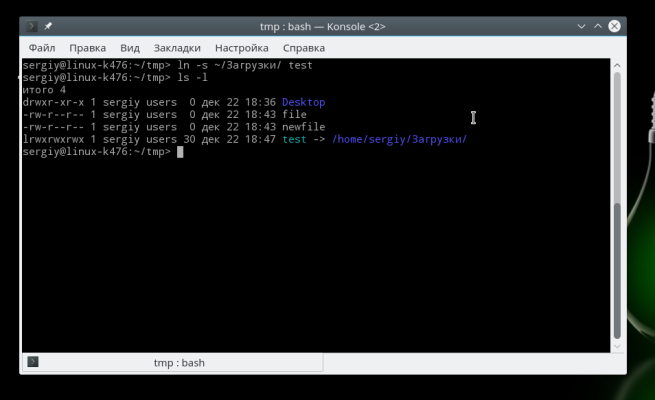-
United Kingdom+44 (20) 4577-20-00
-
USA+1 (929) 431-18-18
-
Israel+972 (55) 507-70-81
-
Brazil+55 (61) 3772-18-88
-
Canada+1 (416) 850-13-33
-
Czech Republic+420 (736) 353-668
-
Estonia+372 (53) 683-380
-
Greece+30 (800) 000-02-04
-
Ireland+353 (1) 699-43-88
-
Iceland+354 (53) 952-99
-
Lithuania+370 (700) 660-08
-
Netherlands+31 (970) 1027-77-87
-
Portugal+351 (800) 180-09-04
-
Romania+40 (376) 300-641
-
Sweden+46 (79) 008-11-99
-
Slovakia+421 (2) 333-004-23
-
Switzerland+41 (22) 508-77-76
-
Moldova+373 (699) 33-1-22
 English
English
The ln command in Linux
- Main
- Knowledge base
- The ln command in Linux
The ln command in Linux is used to create hard or symbolic links to files or directories. A hard link creates a new name for a file or directory, pointing to the same index node (inode) in the file system. A symbolic link creates a new file that contains the path to the original file or directory.
What the ln command is for
Syntax of the ln command:
ln [options] source_file/directory target_file/directoryOptions for the ln command:
-s: create a symbolic link
-f: overwrite the target file/directory if it already exists
-v: output detailed information about the link creation process
Examples of using the ln command
Creating a hard link:
ln file1.txt file2.txtThis will create a hard link file2.txt that points to the same file as file1.txt.
Creating a symbolic link:
ln -s file1.txt file2.txtThis will create a file2.txt symbolic link that points to file1.txt.
Creating a directory link:
ln -s /path/to/source_dir /path/to/target_dirThis will create a symbolic link to the source_dir directory in the target_dir directory.
Overwriting the target file/directory:
ln -f file1.txt file2.txtThis will create a hard link of file2.txt to file1.txt, even if file2.txt already exists.
Output detailed information:
ln -v file1.txt file2.txtThis will create a hard link of file2.txt to file1.txt and output information about the link creation process.







































